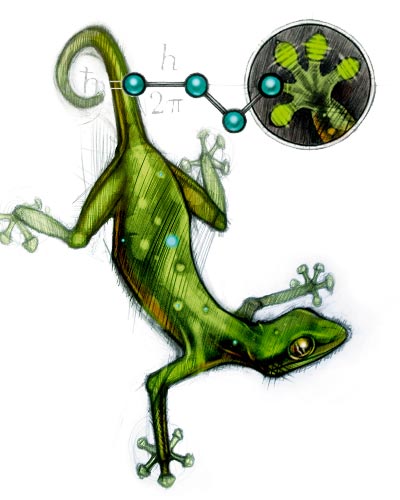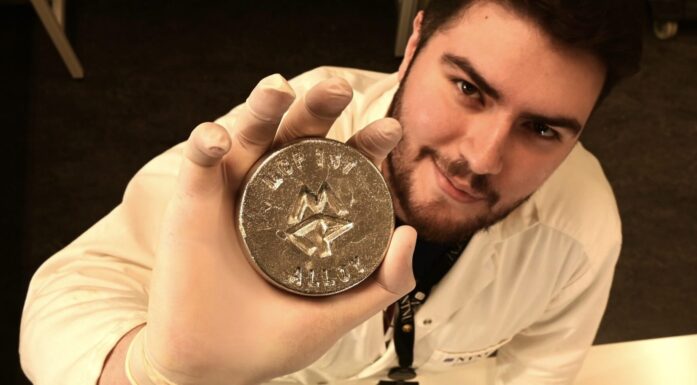The force from nowhere
NEW PROJECT: New knowledge about Casimir energy, including how the energy changes when the surrounding temperature changes.
PhD candidate Simen Ådnøy Ellingsen talks to Gemini journalist Synnøve Ressem:
I’m working on a doctoral thesis on the Casimir effect at the Department of Energy and Process Engineering, NTNU.
Casimir energy (vacuum energy) is everywhere. No one has seen it, but we know it is there, and it makes amazing things happen.
It comes from electromagnetic fields which arise and disappear faster than they can be detected. They are, in other words, impossible to observe directly. But the energy in these electromagnetic fields causes things to stick to each other.
It was the Dutch physicist Hendrik Casimir who predicted the existence of what we now call the Casimir effect. It happened in 1948. His physicist colleagues thought the prediction was interesting, but his work remained a theoretical curiosity for the next 50 years.
Casimir energy
- NEW PROJECT: New knowledge about Casimir energy, including how the energy changes when the surrounding temperature changes.
- PhD Supervisor: Professor Iver Brevik.
- COLLABORATING SCIENTISTS: Dr Stefan Scheel and Dr Stefan Buhmann at Imperial College London, Professor Kimball Milton at the University of Oklahoma.
PhD candidate Simen Ådnøy Ellingsen.
But then, in 1997, an American physicist managed to measure the microscopic effect properly, which sparked a surge of new research on this effect. The reason there wasn’t much interest in what Casimir had found at first was probably because no one knew how it could be used – this was before nanotechnology became a research field. In fact, the Casimir effect is a brilliant example of the value of pure research, and the way that new discoveries do not necessarily lead to practical uses, at least not in the short term. But interest has grown and now there are hundreds of papers on this effect published every year.
Vacuum energy is always present, and when things come very close to each other, the energy changes and gives rise to a force of attraction. It is this effect that enables geckos to walk along walls and ceilings. Gecko feet have millions of microscopic hairs that come right up to the surface of the foot. The Casimir effect creates an attraction between the hairs and the surface that the gecko is on. Its feet stick as easily as a Post-it Note, and loosen as easily, without leaving any traces. The “glue” works so well that a gecko on the ceiling could wear a rucksack weighing about 40 kg without falling down.
The attraction only works over short distances, less than about one-thousandth of a millimetre. This is a problem for nanotechnology, because it means that small components near each other will stick together. The dream is to turn this force on its head, so that the pieces repel each other rather than attract. In that case, nanomaterials will hover over each other instead of sticking together. Nano researchers around the world are working intensively to solve this problem, which is called stiction, or static friction.
“The energy is everywhere. No one has seen it, but we know it is there, and it makes amazing things happen.”
It would be useful to be able to turn on a repulsive force if you want to make microscopic machines. For example, small gears could work against each other without being in direct contact and components could hover over each other and move almost without friction. This is especially important with nano components, because they are only a few atoms thick and it does not take much contact to damage them.
Before we can hope to make use of and ultimately alter this force, we have to understand how it behaves. What happens when we change the temperature? What role do materials play? What about the shape of the components that are affected by the force? What happens if the different components are in motion? There are many different facets to this problem, which has made the Casimir effect an exciting field of research where scientists from many areas of physics meet.
One problem I work on is trying to understand how the force changes when the surrounding temperature changes. Here the experts disagree, and the theory and experimental results seem to contradict each other. According to theory, the force should depend quite strongly on the temperature of the surroundings. But the best experiments we have show no such dependency. For ten years, experts have been scratching their heads trying to understand why. Some think they have found the answer, others disagree, and there has been a great deal of discussion.
The most promising explanation now, I think, is that we have to take three factors into account simultaneously: temperature, geometrical shape and material properties. This makes the problem very complicated, but there are a lot of us working on it.
I will continue to study the Casimir effect – the driving force here is to understand more about nature.





